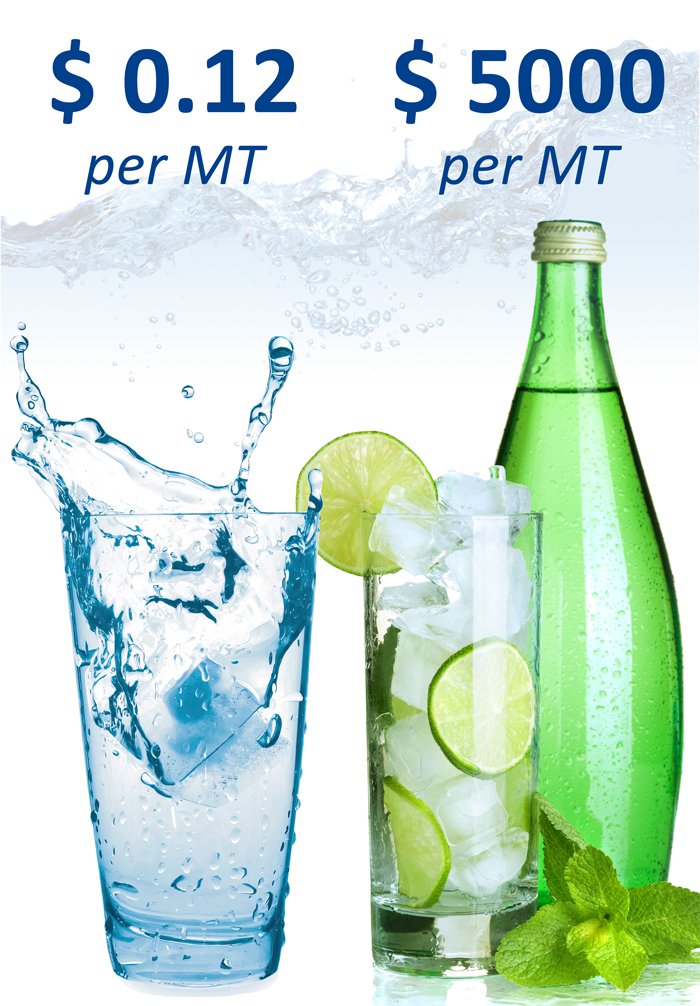Background
Our Aims
AQUA INDEX aims at turning water into a tradable commodity
Universal water pricing
Water prices vary from country to country and according to quality and type. A standard price for fresh water is needed. This can be achieved through the trading of water on international commodities exchanges and in regulated over-the-counter (OTC) markets. AQUA INDEX can extract an impartial price for water based on the transparent prices for agricultural and other commodities, already available on exchanges around the world. Thus an integrated world market for water can be created.
Distribution of water-as-collateral rights
Many members of the international community have access to and control of large quantities of fresh water. In some cases these resources are yet to be drawn upon as a financial asset. AQUA INDEX can assist these fresh-water owners in collateralizing their resource.
AQUA-INDEX – turning water into a tradable commodity
Water Supply
The total volume of water on earth is 1.4 billion km³
97% of this is saltwater
Only 3% is fresh water
The sources of fresh water are estimated as:
- 68.7% is in the form of ice or permanent snow.
- 31% is stored underground and elsewhere.
- Only 0.3% is contained in lakes and rivers.

Currently, the total usable fresh water supply for humans and ecosystems represents less than 1% of all fresh water resources. Water desalination provides less than 1% of the total demand.
This supply is unevenly distributed around the world. As climate change continues, water trading among countries and states is increasingly becoming a part of public debate in national and international forums. Water is a commodity, and tools are needed to clarify discussion of its value and tradability.
Water Pricing

Water pricing is generally set by governments based on national conditions and often uses a cost-to-consumer scale (agriculture, industry, home-owners, etc.).
Water is subject to an extremely wide range of prices, tax rates, and exit fees.
International water agreements are less frequent, and often clouded by political issues. Differing national price patterns complicate discussions among the parties.
Water needs a standard, impartial method for setting a market value. A definite market value will allow water to be used as security for loans.
Based on the following three fluctuating measures including the current price of traded agricultural commodities, the Aqua Index algorithm extracts the inherent value of fresh water.

When these figures and other information are entered into the Aqua Index algorithm, the result is the world’s first accurate and consistent value for fresh water.
Water Regulation
Nationally, regulations regarding water vary from region to region. Some retain water ownership centrally, with water use and pricing tightly controlled by the government. Other countries allow private ownership of water resources, which may be based on individual land rights.
Internationally, water regulations are more complex. Where fresh water sources are shared by neighboring countries, water rights (or access entitlements) can become a contentious subject of negotiations.
With few exceptions, water markets tend to be local and informal. Most water law, such as the Urban Waste Water Treatment Directive in the EU and the Clean Water Act in Canada tend to regulate quality standards, drainage and drought; not trade.
Where water trading does exist it takes on several forms that differ from project to project, and are dependent upon the geography, and other factors of the area. Even in areas where water trading is relatively advanced, such as Australia, trade can be limited to the states and municipalities themselves.
However, fresh water has been recognized as a commodity by several national and supra-national bodies. This means that its price can now be determined by market forces.

